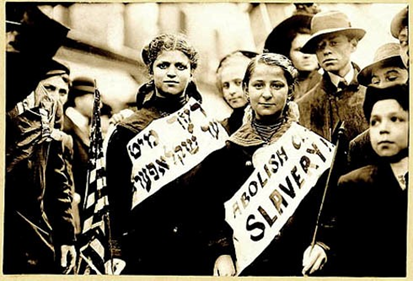
Why May Day Should Be a Jewish Holiday
!["ABOLISH CH[ILD] SLAVERY!!" in English and Yiddish ("Nider mit Kinder Schklawerii"), probably taken during May 1, 1909 labor parade in New York City. George Grantham Bain Collection (Library of Congress).](http://lilith.org/wp-content/uploads/2017/05/May-Day.png)
“ABOLISH CH[ILD] SLAVERY!!” in English and Yiddish (“Nider mit Kinder Schklawerii”), probably taken during May 1, 1909 labor parade in New York City. George Grantham Bain Collection (Library of Congress)
It is truly the season for Jewish holidays: in the weeks following Passover, Jewish communities across the world have commemorated Holocaust Remembrance Day and many are preparing to observe Yom Hazikaron (a memorial day for fallen Israeli soldiers) and Yom Ha’atzma’ut (a celebration of Israeli independence). I propose one more spring holiday with an important Jewish history to add to the mix: let’s commemorate the important role Jews, especially Jewish women, have played in the history of the labor movement by celebrating International Workers’ Day on May 1st.
May Day has become a worldwide holiday celebrating workers’ victories and demanding protections for workers and immigrants. Dozens of countries observe May 1st as Labor Day, and despite its roots as a European pagan holiday, May Day’s recent history is deeply entwined with the history of Jewish immigrants in the US.
On May 1, 1886, communists, socialists, anarchists, and union members joined together across the US in a general strike demanding an 8-hour workday. An estimated 300,000 people took to the streets across the country, including 40,000 in Chicago. Many of the strikers were Jewish immigrants, who worked in sweatshop conditions at textile factories around the country. Protests continued for days, and while Chicago employers called in scab workers to break the strike, Chicago police opened fire on protesters.



